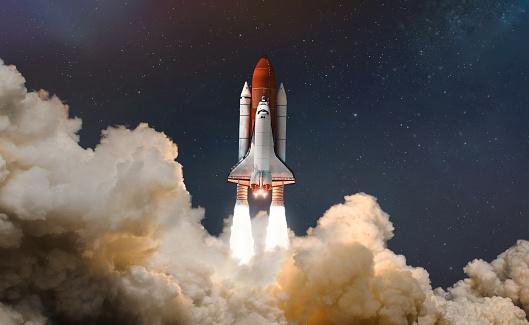every week, Technology World and #AstroMiniBR brings together five relevant and entertaining astronomical curiosities produced by collaborators. twitter profile To spread the knowledge of this science, which is the oldest!
#1: Earth seen from space
The light of the Earth, which we see from space at night, does not show us where the continents are, only the developed cities that follow the continents in a distorted manner.
Galaxies behave similarly#AstroMiniBR pic.twitter.com/si8YYG0b95
– Arthur Loureiro (@cosmonist) 20 March 2023
Can you find your city in the picture above? Surprisingly, in this South American nightscape, city lights make this task quite possible.
Artificial lights reveal the presence of humans on the map, highlighting particularly developed or populated areas of the surface (mainly near coastal coasts), while dark areas cover most of the central areas in the image.
Coincidentally, galaxies in the Universe have relatively similar distributions: new computational methods help to simulate the Universe at large scales and with a wealth of knowledge of physical processes. These new tools provide results like the image on the right above and show new ones. insights It’s about how the distribution of matter in the cosmos is formed, common and dark, and helps astronomers better understand the formation and cosmic evolution of structures such as galaxy groups and clusters.
#2: How to launch an object into space?
??40,320 km/h
If you want to launch an object (non-propelled) into space, this is the speed to be! This is the v call. Escape the World!This v. With this, the body is freed from the gravitational pull. Smaller in V., the body either falls or goes into orbit.#AstroMiniBR pic.twitter.com/MRhCCqyGCe
— Thiago Flaulhabe (@TFlaulhabe) 21 March 2023
Unless you’re a Marvel superhero, launching an object into space without a fuel propulsion is an impossible task. This is due to escape velocity: the minimum velocity required for an object to escape the gravitational center of gravity without experiencing any additional acceleration.
At the Earth’s surface, the escape velocity is about 11.2 kilometers per second (or just over 40,000 kilometers per hour) if atmospheric resistance is negligible. The escape velocity of the less massive Moon is about 2.4 kilometers per second on its surface.
If these numbers seem high to you, imagine this: At the event horizon of a black hole, the escape velocity is so high that it exceeds the speed of light (about 300,000 km/sec), so not even light rays can pass through it. escape into space
#3: What would it be like to “hear” an exoplanet?
With the sonification of the spectrum of exoplanet WASP-96b, we can hear the composition of its atmosphere!
spectral signatures of the water molecule ??
HE ?? indicates the amount of water and the longer the wavelength, the lower the frequency of the tone#AstroMiniBR pic.twitter.com/69oSCPOuqP— yanna martins franco (@martins_yanna) March 23, 2023
To tell the truth, that’s not possible. But with sonification, astronomers can convert data ranging from information about the brightness of stars to the strength of gravitational waves into sound waves.
One of the most obvious applications of this technique, which is a kind of sound design, is to make this information accessible to people who are blind or have low vision. But sonification also offers new experiences for the general public and scientific research. An example of this is the video above with sonification of exoplanet WASP-96b; where the audio indicates the amount of light detected at each data point and plays a note for each point. The four water signatures detected in the exoplanet’s atmosphere are represented by the sound of falling water drops, a signature made up of several data points.
#4: Convective cells in the sun
The surface of the Sun is like a boiling pot of water.
These are plasma bubbles with a typical diameter of 1500 km (similar to the distance between Brasilia and Porto Alegre) created by convection of the interior material.#AstroMiniBR
(c) NSF pic.twitter.com/lmEZbcvG4g– Ana Carolina Owner (@astroposses) 24 March 2023
No, you’re not looking at a giant tortoise shell, you’re looking at the surface of the Solar. At this scale, the sun’s surface is an impressive work of granules, each the size of the state of Minas Gerais.
Caused by thermal convection, these granules are columns of hot, rising plasma surrounded by cooler bands of descending plasma. Some regions between the edges of the granules are very bright as they are curious magnetic windows to a deeper, hotter solar interior.
This very high resolution video shows a surface area of the Sun equivalent to the approximate size of our planet and was captured by the Inouye Solar Telescope in Hawaii, whose main scientific purpose is to study the Sun’s physical properties. .
#5: A little piece of our history in space!
part of our history and culture is currently traveling in space ??
Voyager mission gold discs contain pictures, music, natural sounds and greetings in many languages.
curated by Carl Sagan himself!#AstroMiniBR
{c} NASA/JPL-Caltech pic.twitter.com/Ygvk55kF2d— yanna martins franco (@martins_yanna) 24 March 2023
In the early 1970s, NASA’s Pioneers 10 and 11 probes, which preceded the Voyager probes, carried small sheets of metal identifying their time and place of origin for the benefit of other space travelers who might find them aboard a spacecraft in the distant future.
From this success, NASA placed a bigger and more important message on Voyager 1 and 2: a kind of time capsule intended to communicate our world’s history to aliens. Voyager’s message is conveyed by a phonograph disc, a 12-inch gold-plated copper disc containing sounds and images selected to depict the diversity of life and culture on Earth.
Selected by a NASA committee chaired by Carl Sagan, the contents of the discs combine natural sounds such as thunder, wind, sea waves, bird chirping. There was also a music collection with artifacts from different times and cultures and greetings in 55 different languages.
Source: Tec Mundo
I’m Blaine Morgan, an experienced journalist and writer with over 8 years of experience in the tech industry. My expertise lies in writing about technology news and trends, covering everything from cutting-edge gadgets to emerging software developments. I’ve written for several leading publications including Gadget Onus where I am an author.












